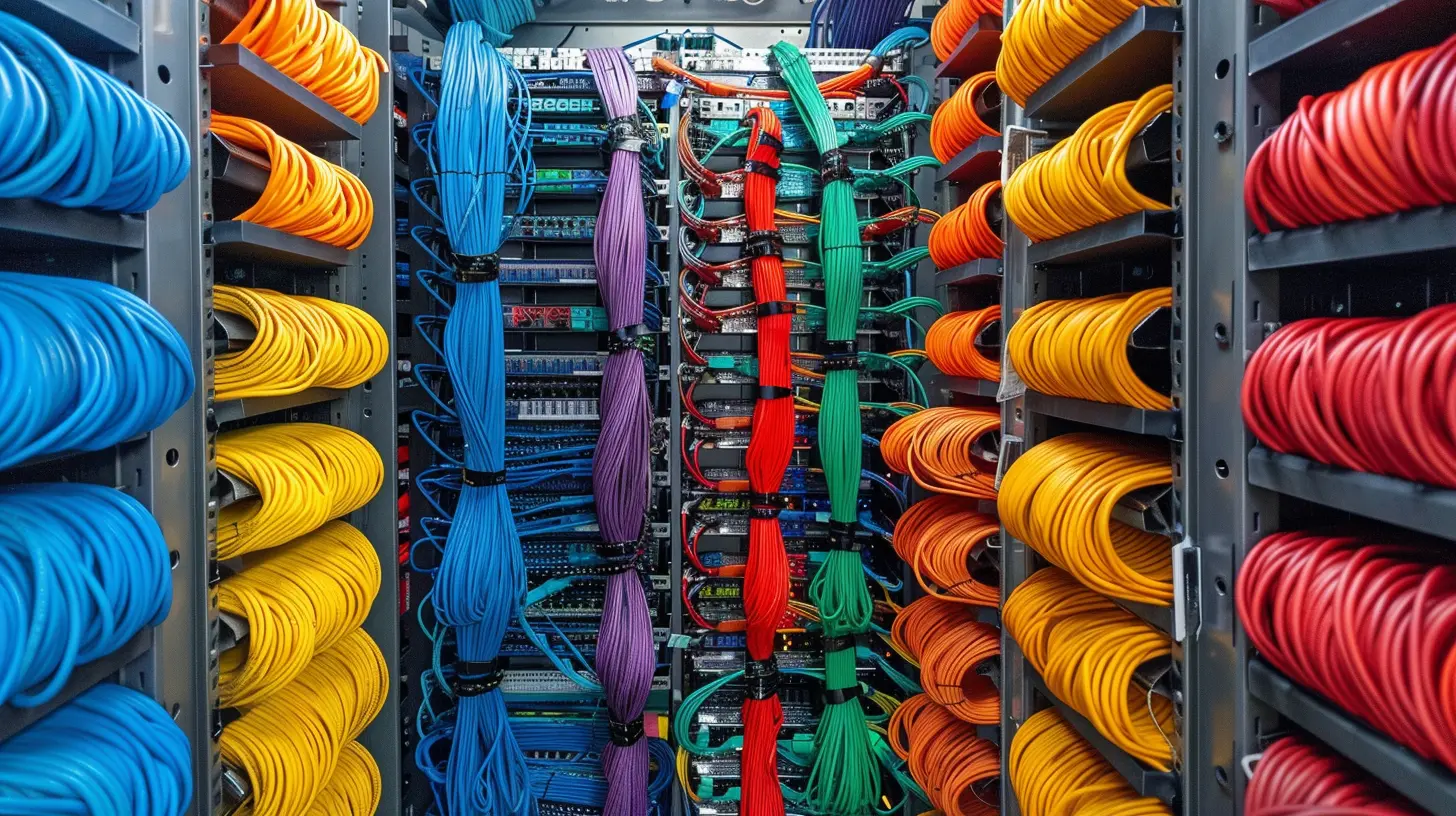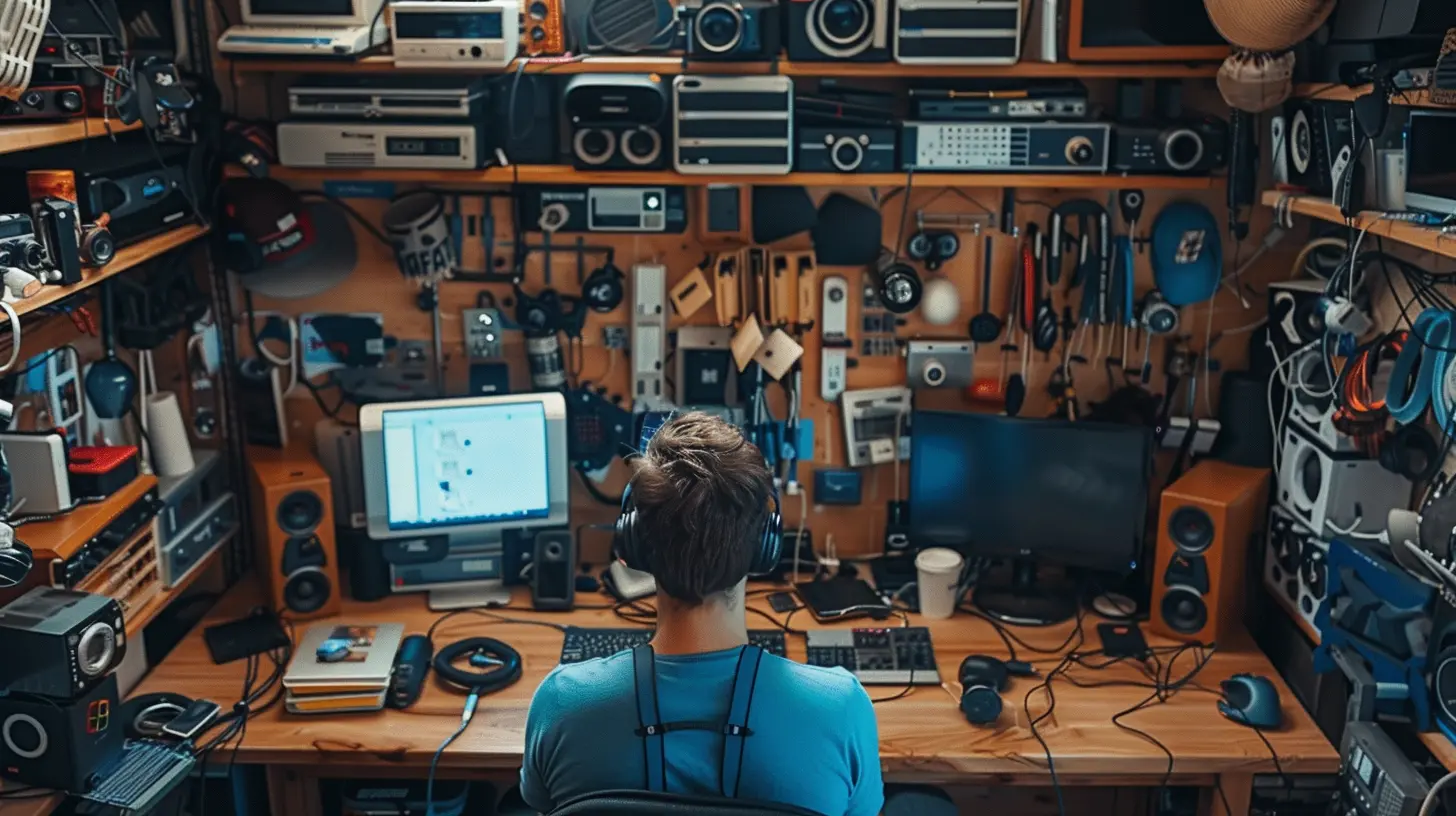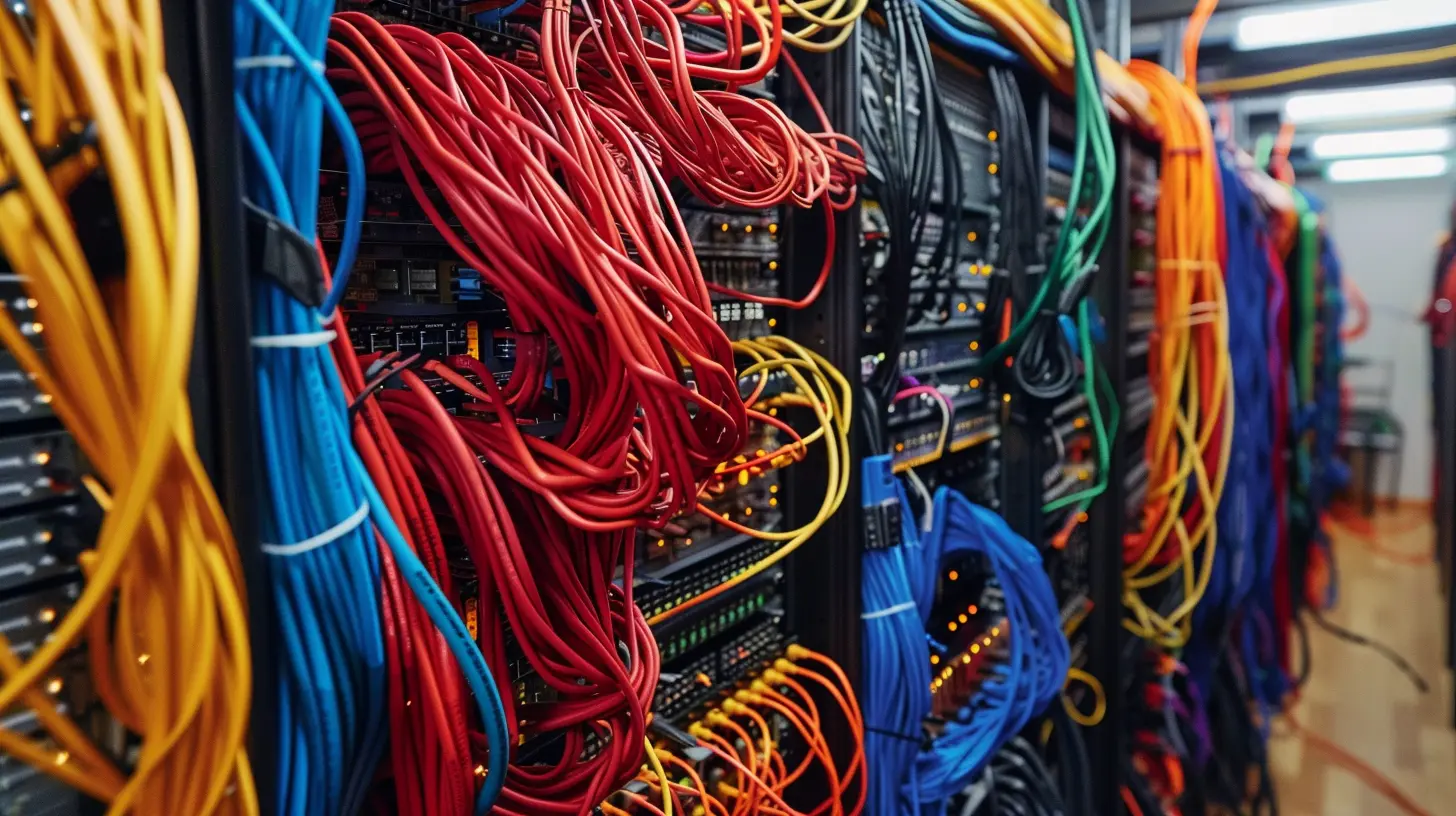Cable Management Solutions for a Tidy Workspace
22 May 2025
Let’s be real: a messy workspace filled with tangled cables is one of the most frustrating things to deal with, especially when you’re trying to focus. Whether you're working from home or in the office, cable clutter can not only be an eyesore but can also make it difficult to find the right cord when you need it. Plus, nobody wants to be that person who accidentally unplugs their entire setup because they pulled the wrong cable.
If you're tired of the spaghetti mess under your desk, you're in the right place. Let’s dive into some cable management solutions that will help you create a tidy, organized, and (dare I say) aesthetic workspace.

Why Is Cable Management Important?
Before we get into the nitty-gritty of cable management solutions, let’s talk about why you should care about this in the first place. I mean, it’s just a few cables, right?1. Improved Aesthetics
There’s something incredibly satisfying about a clean, clutter-free workspace. When your cables are neatly organized and out of sight, your desk looks more professional and put together. Plus, it’s easier to focus when your workspace isn’t a chaotic mess of wires. Think of it like cleaning your room—everything feels just better when it’s tidy.2. Efficiency and Accessibility
Ever tried to unplug your phone charger, but ended up unplugging your monitor instead? Yep, I've been there too. Proper cable management ensures that each cable is in its place, making it easier to find and access the one you need. This is particularly important if you frequently switch between devices or need to move equipment around.3. Safety
Believe it or not, poorly managed cables can be a safety hazard. Cables strewn across the floor can cause trips and falls, and tangled cords can even overheat or get damaged, which could lead to electrical fires. A well-organized setup reduces the risk of accidents and prolongs the lifespan of your expensive gadgets.4. Enhanced Durability of Cables
When cables are twisted, bent, or tangled, they tend to wear out faster. Proper cable management helps prevent unnecessary strain on your cables, reducing wear and tear, and ultimately saving you money in the long run.
Cable Management Solutions Worth Considering
Now that we’ve established why cable management is important, let’s get into the actual solutions. There are a variety of products and methods that can help you keep your cables in check, and I’m here to break them down for you.1. Cable Sleeves
One of the easiest and most effective ways to manage a bundle of cables is by using cable sleeves. These flexible tubes can hold multiple cables together, making them look like one single, neat cord. They come in various sizes and materials, from fabric to plastic, so you can choose the one that best fits your aesthetic and needs.How to Use Cable Sleeves:
- Gather your cables into a bundle.- Slip the sleeve over the bundle.
- Adjust the sleeve so the cables are snug inside.
This solution is perfect for cables running from your monitor to your PC or from your power strip to your devices. Plus, they’re great for hiding cables along the floor, keeping them out of sight and out of mind.
2. Cable Clips
Cable clips are small, adhesive-backed holders that stick to your desk or wall, keeping cables in place. They're perfect for preventing cables from falling behind your desk or keeping frequently-used cables, like phone chargers, within easy reach.How to Use Cable Clips:
- Stick the clip where you need it (side of the desk, wall, etc.).- Snap the cable into the clip.
The best part? They’re dirt cheap and come in packs, so you can get a bunch without breaking the bank.
3. Cable Boxes
A cable box is exactly what it sounds like—a box specifically designed to house power strips and excess cable. If you have a cluttered mess under your desk (we’ve all been there), a cable box can clean that up in no time.How to Use a Cable Box:
- Place your power strip inside the box.- Feed the cables through the designated openings.
Cable boxes are a great solution if you have a lot of devices plugged into a single power strip. Not only do they hide the clutter, but they also protect your power strip from dust and accidental spills.
4. Velcro or Zip Ties
If you’re looking for a low-cost, no-frills solution, Velcro or zip ties are your best friends. These are perfect for bundling cables together and keeping them out of sight. You can even use color-coded ties to easily identify which cable belongs to which device.How to Use Velcro or Zip Ties:
- Group your cables together.- Wrap a tie around the bundle.
- Secure it tightly, but not too tight to avoid damaging the cables.
Velcro ties are reusable, making them a more flexible option if you frequently re-arrange your setup. Zip ties, on the other hand, are more secure but need to be cut to remove, so choose based on your needs.
5. Cable Raceways
If you have cables running along the wall or floor, cable raceways are a fantastic solution. These are plastic or metal channels that conceal and protect cables. They’re often used in professional office settings but can be just as useful in a home office.How to Use Cable Raceways:
- Measure the length of the area where you want to hide the cables.- Install the raceway by attaching it to the wall or floor.
- Tuck the cables inside.
Raceways are available in various sizes and colors, and some are even paintable, so you can match them to your walls or baseboards for a seamless look.
6. Under Desk Cable Trays
If you want a more permanent solution, consider installing an under-desk cable tray. These trays attach to the underside of your desk and hold your cables and power strips out of sight.How to Use Under Desk Cable Trays:
- Mount the tray underneath your desk using screws or adhesive.- Place your power strip and cables inside.
This is a great solution if you don’t want cables hanging down or cluttering up the floor. It’s a bit more of a commitment, but the result is a super clean and organized workspace.
7. Cable Labels
It may sound overly simple, but labeling your cables can be a game-changer. By labeling which cable belongs to which device, you can easily identify and unplug the right one without having to follow it all the way back to the device.How to Use Cable Labels:
- Write the name of the device on a small label.- Stick the label near the plug or along the cable where it’s easily visible.
You can even get pre-made labels designed specifically for cable management, but a simple piece of tape and a marker works just as well.
8. Wireless Charging and Bluetooth Devices
One of the most effective ways to reduce cable clutter is to eliminate cables altogether. Switching to wireless charging pads for your phone and Bluetooth peripherals for your PC (like a keyboard, mouse, or headphones) can drastically reduce the number of cables you need to manage.How to Incorporate Wireless Solutions:
- Replace your old keyboard and mouse with Bluetooth versions.- Set up a wireless charging pad on your desk.
While wireless solutions may not work for every device, they can significantly reduce the total number of cables, making the rest of your cable management much easier.

DIY Cable Management Hacks
You don’t always need to buy specialized products to manage your cables. Sometimes, a little DIY can go a long way.1. Binder Clips
Binder clips aren’t just for papers. You can clip them to the side of your desk and run your cables through the metal loops to keep them in place.2. Toilet Paper Rolls
Got some leftover toilet paper rolls? Use them to group cables together. You can even decorate the outside to make them look a bit more appealing. It’s a budget-friendly option for keeping cables out of sight.3. Bread Ties
If you're really in a pinch, bread ties can be used to bundle your cables together. They're not the prettiest solution, but hey, they work!
Maintaining Your Cable Management Setup
Once you've got your cables organized, the key is to maintain it. Make a habit of adjusting and tidying cables whenever you add new devices to your workspace. Trust me, it’s a lot easier to keep things organized if you deal with it as you go rather than letting it pile up again.Final Thoughts
Cable management doesn’t have to be a daunting task. With the right tools and a little bit of effort, you can turn your chaotic cable situation into a sleek, organized setup. Whether you go for cable sleeves, clips, or a full-on under-desk tray, the key is finding a solution that works for you and sticking with it.Not only will your workspace look better, but you’ll also feel more productive and less stressed in a clean, organized environment. So, what are you waiting for? Grab some cable ties and get to work!
all images in this post were generated using AI tools
Category:
Tech AccessoriesAuthor:

Jerry Graham
Discussion
rate this article
3 comments
Layla McCallum
Untangle your chaos—let's tame those cables!
May 31, 2025 at 12:22 PM

Jerry Graham
Absolutely! A tidy workspace starts with organized cables. Let's get those sorted!
Buzz Reynolds
Cable clutter can quickly turn a sleek workspace into a tangled jungle! Those simple management solutions can transform not just our desks but also our productivity. Who knew that a few clever clips and sleeves could spark so much joy? Happy organizing!
May 27, 2025 at 12:46 PM

Jerry Graham
Thank you! It's amazing how simple solutions can enhance both our workspace and productivity. Happy organizing!
Chelsea Reese
Effective cable management not only enhances workspace aesthetics but also boosts productivity. By organizing cables, we reduce distractions and create a more efficient environment. Investing in thoughtful solutions fosters a sense of order, allowing creativity and focus to flourish in our increasingly tech-driven lives.
May 26, 2025 at 3:15 AM

Jerry Graham
Absolutely! Effective cable management is essential for a tidy workspace, enhancing both aesthetics and productivity by minimizing distractions. Investing in smart solutions truly fosters an environment conducive to creativity and focus.



